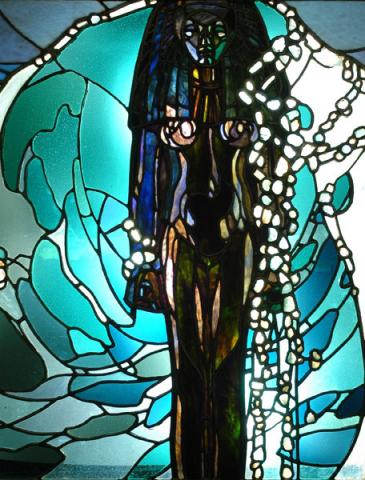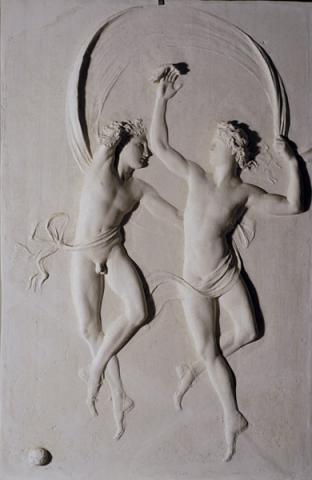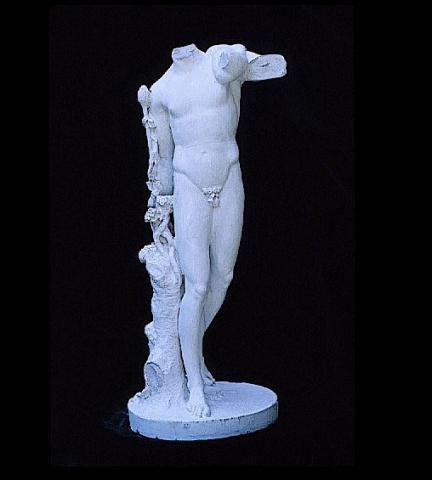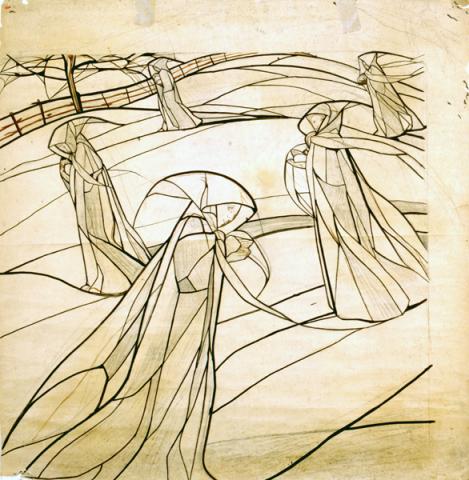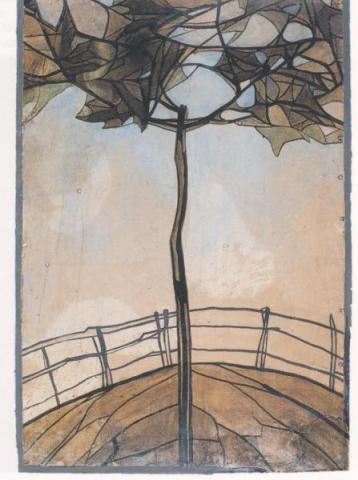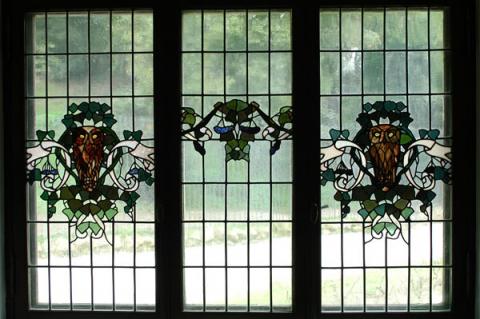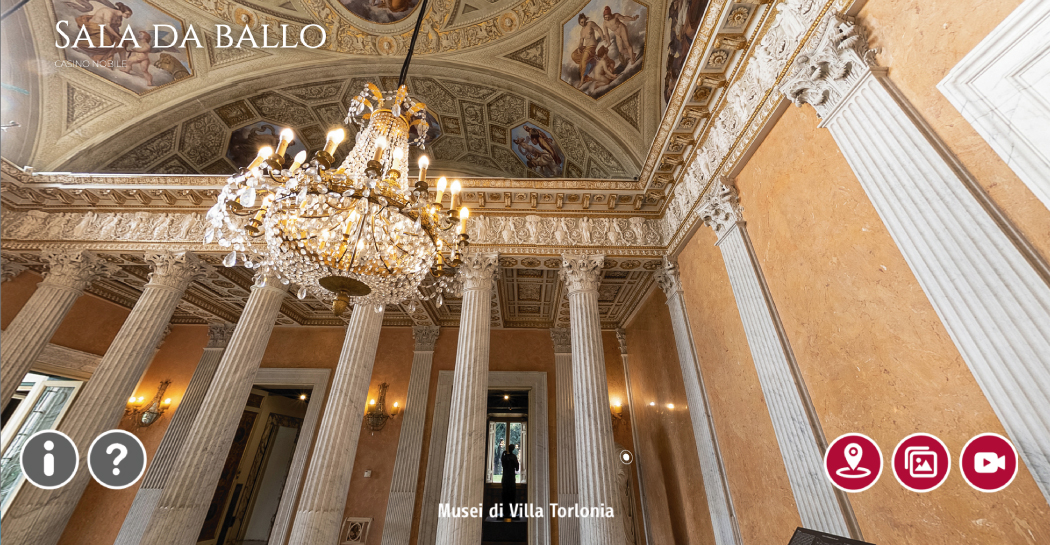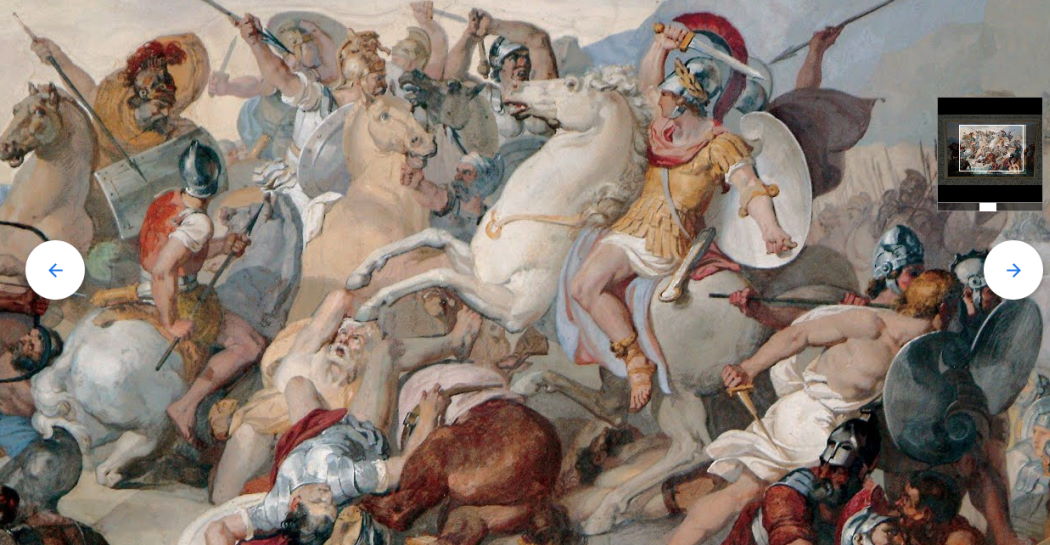The Room of the Owls
This small room was originally decorated in the elaborate imperial style of wood panelling and had rich drapes hanging from the ceiling. Only a few fragments of this décor remain, insufficient for a reconstruction of the furnishings to be possible.
The only original decorative element that remains is a piece of stained glass, composed of three panels by Duilio Cambellotti. The two side panels are decorated with stylized owls and the central panel with ivy and ribbons.
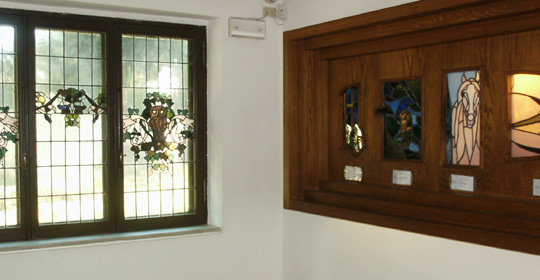
The owls, perching on the ivy branches, are made from coloured glass, partly painted with flame, to improve the effect of the plumage.
The piece of stained glass forms part of the last series made by Cambellotti and Picchiarini for the House of the Owls, after the restoration by the architect Vincenzo Fasolo in 1916-19.
The room also contains a large panel decorated with four fragments of stained glass. It is a trial piece made by Cesare Picchinarini to check how the design would transfer into glass.
All four were designed by Duilio Cambellotti and one of them, “The Owl in the Night”, was used for the stained glass of the same name, which was once in the prince’s bedroom, but has since been lost. This piece is also known from a sketch in a private collection.
The other three trial pieces correspond to the works of stained glass “The Soldiers” and “Winter Clouds” and to an unidentified piece, the subject of which is swallows in flight, a motif very dear to Cambellotti, which he often used as a decorative motif. The motif of swallows in flight is also used in a sketch by Cambellotti from 1913 and in a cartoon.
A small sketch for “The fireflies” and a large cartoon for “The tree”, which was planned but never made, complete the display.


























